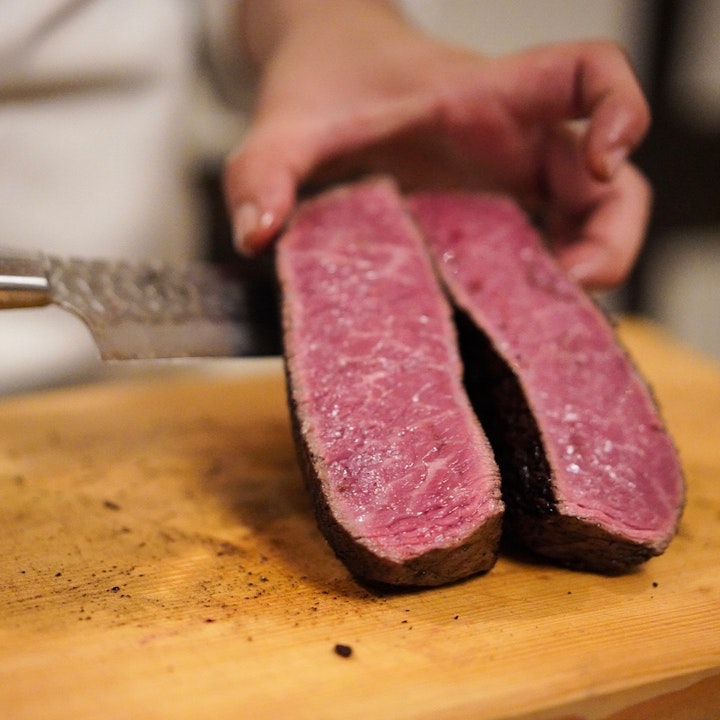Available now: Japanese A5 Wagyu
Crowd Cow works directly with some of the best Wagyu farms in Japan.

Spending time in Japan is pretty special to me, especially when I get to eat fantastic food prepared by the best chefs in the country. I just got back from a trip to Kagawa Prefecture to meet with our Olive Wagyu producers and the experience was phenomenal. One of the trip highlights was visiting Ichigo Steakhouse, the Olive Wagyu specialty grill in Takamatsu.
Chef Mori-san grills over sumi and binchotan charcoal and is the only nose-to-tail Olive Wagyu restaurant anywhere in the world. I've been to Ichigo before so it was fantastic to be back.
Available now: Japanese A5 Wagyu
Crowd Cow works directly with some of the best Wagyu farms in Japan.

Mori-san said that he prefers to grill over binchoutan or the less expensive sumi charcoals for the flavor that it imparts. This is rather unusual in Japan as the vast majority of steak is cooked teppanyaki on a hot flat surface. Grilling over hot binchotan imparts a subtle smokey flavor while giving the meat a nice crust. Working with binchotan is difficult since it's time-consuming to light and challenging to work while, which is why you don’t see it at anywhere but the most die-hard of meat loving establishments in Japan — like Ichigo.
After letting the meat rest for a good 10 to 15 minutes, he sliced it and brought out an ishiyaki, or hot stone, so we could cook it further to taste at the table.
Mike Bagale, the executive chef at Alinea for the past seven years, joined me on this trip and he shared that Wagyu fat should be melted to bring out the flavor, so finishing it on ishiyaki shouldn’t really be an option.

We also talked a lot about dry-aging. According to Mori-san, there are only 4-5 places in Japan that do it well. One is the restaurant Mori-san worked at two years ago, prior to starting Ichigo, a whole-animal Yakiniku grill in Osaka called Tajimaya (但馬屋). He's experimenting with dry-aging at Ichigo and views these efforts as an experiment in working with Wagyu, but he says that it seems Wagyu may not be well-suited to dry-aging, despite many in Japan running towards dry-aging as a way of differentiating from the next place. He now experiments with serving beef as quickly as possible after slaughter. The freshness, he says, improves the character of the fats and makes the beef easier to work with. The beef he served us (pictured) was slaughtered on Wednesday and served on Saturday without ever being vacuum packed.
Mike seemed to agree. Because Wagyu is so fatty that dry-aging essentially removes water from what little “meat” is in there and further concentrates the fat. Which is rather pointless to do, especially with A5 beef.
While in Japan, we also tried a lot of the A4 slightly less marbled cuts, as well as cuts from the round and rump. It surprised me that the rump cuts are incredibly marbled in Wagyu! Unlike Angus beef, where you would need to slow cook, braise, or sous vide these cuts, we were able to grill them and enjoy like a premium steak! They were extremely tender with more flavor than even the strips or rib steak. Not to mention, you could eat more of them.

Available now: Japanese A5 Wagyu
Crowd Cow works directly with some of the best Wagyu farms in Japan.